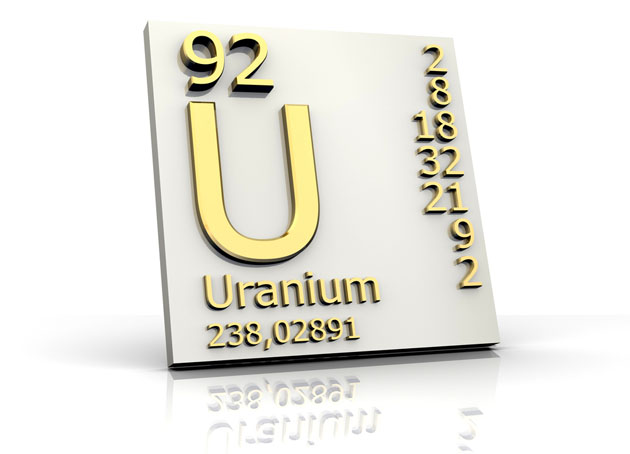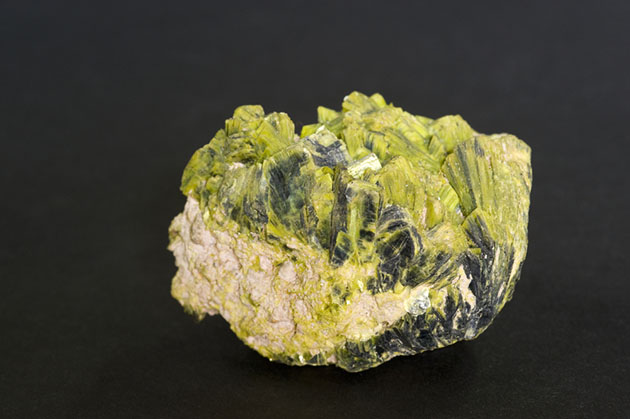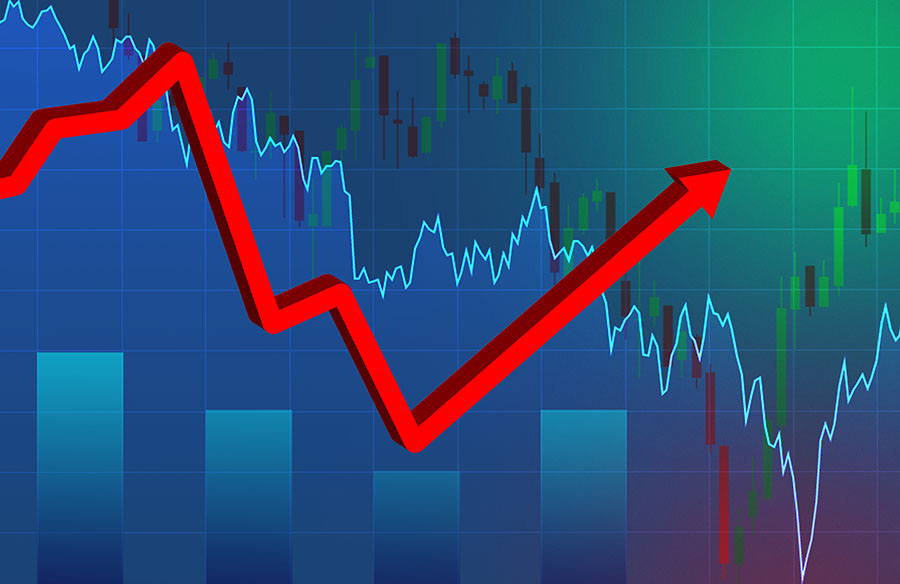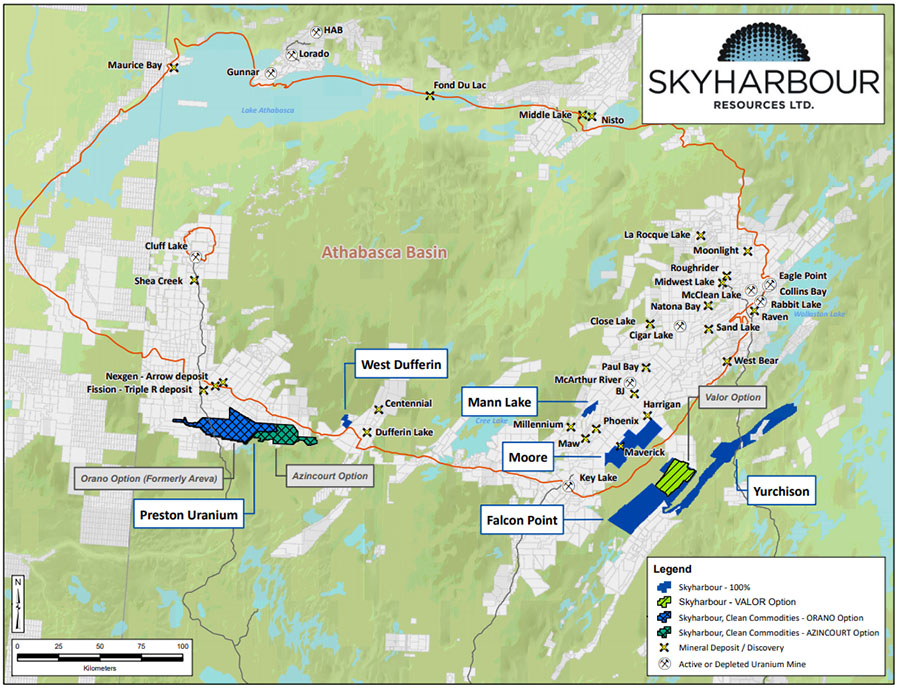The Energy Report: It's been just over three months since we last discussed the nuclear industry and the market prospects for companies in the uranium space. What have been the most important developments since then?
David Talbot: There have been a number, both on the supply side and the demand side, since early August. All the catalysts appear to strengthen the long-term fundamentals of the sector, and while they haven't necessarily moved the market, we believe they ultimately will help.
On the demand side, Paladin Energy Ltd. (PDN:TSX; PDN:ASX), on which we have a Buy rating and a $2.55 target price, signed an offtake deal with France's EDF Group to supply a total of 13.7 million pounds (13.7 Mlb) of yellowcake between 2019 and 2024. It received $200 million ($200M) up front to secure supplies, with delivery still six years away.
In addition, the United Arab Emirates signed a $3 billion ($3B) nuclear fuel supply contract covering the first seven years of operations at the first four of its reactors. Uranium One Inc. (UUU:TSX), on which we have a Buy rating and a $3.50 target price, is one of the six suppliers involved in that deal. AREVA (AREVA:EPA) also signed a contract to supply more than 66 Mlb of U3O8 to EDF from 2014 to 2075.
Beyond the demand side, we also see the supply side tightening, with the HEU (highly enriched uranium) agreement expected to go off-line in about 13 months, removing 24 Mlb of supply.
Current price weakness is causing cuts in production forecasts, including for Cameco Corp. (CCO:TSX; CCJ:NYSE)/not rated. It has deferred its Kintyre project and dropped long-term production guidance. BHP Billiton Ltd. (BHP:NYSE; BHPLF:OTCPK/not rated), has deferred its massive Olympic Dam expansion. Kazatomprom and Uranium One have canceled the Zarechnoye South project, and Uranium One announced 2014 guidance that was well below expectations. Paladin deferred its Langer Heinrich Stage 4 expansion (unless we see $85/lb uranium). Energy Fuels Inc. (EFR:TSX) closed three mines in the U.S. Southwest. If current producers can't keep projects going at current prices, we can't expect investors to pony up the capital to build newer projects, which are often more expensive, of lower grades and have higher cost than current operations.
TER: Despite the continued positive long-term outlook for uranium demand, the price has been in a downtrend since midyear. Why is that?
DT: We believe the recent spot price downturn has to do with excess short-term uranium supply and low discretionary demand mainly from utilities. For much of the summer, China was not buying uranium on the spot market, and many utilities were covered for 2013 requirements. Uncertainty still surrounds long-term nuclear plans for some developed nations, including Germany, France and, of course, Japan—although we do believe some of those decisions are more political than scientific. So investors weren't touching the commodity either.
TER: Despite this recent price weakness, are you still bullish on the uranium space overall?
DT: We are still bullish. As we have stated in a couple of recent sector updates, the uranium renaissance still appears to be moving forward. There are more reactors planned or under construction today than before the Fukushima Daiichi disaster and we don't believe that anyone will step away from nuclear energy entirely. Emerging markets are going to be the real growth story, specifically China, India and Russia. Despite the current overhang, we remain bullish and expect to see 240–260 Mlb of demand by 2020, offset by maybe 200 Mlb of combined primary and secondary supply. We expect demand to exceed supply by 2014. Without higher uranium prices to support development of new mines, a long-term supply gap does exist.
Low prices are pushing expansions off or canceling them altogether, which is negative from a company standpoint but is actually positive from a long-term supply-demand perspective. We talked in August about the delays at Paladin, Cameco and BHP taking about 23 Mlbs off-line. We can now add Kazatomprom and Uranium One to the mix, and a number of the other projects that will have incremental impacts as well. Paladin believes the break-even price for projects is $85/lb. If Paladin is right, that deficit could widen even further, putting upward pressure on uranium prices.
TER: What do you think will reverse the downtrend in uranium prices, and when would you expect that to occur?
DT: Price is the only catalyst that uranium sector investors care about right now, in our opinion. The main trend reversal will likely be in spot uranium buying from China and Japan, as well as from investors. In the second half of next year we'll hopefully see some movement, as the Japanese get restart approvals. China has already resumed its purchasing in the spot market and started importing uranium again. That's helping to remove some supply overhang in the spot market.
We cannot underestimate China's impact—it currently has 15 reactors in operation, 26 under construction and 51 planned, according to the World Nuclear Association. We estimate that China is going to need 45–50 Mlb annually by 2020. That's the same as what the U.S., the largest nuclear power generator, uses today. Japan is going to have to resolve its nuclear regulatory issues before it comes back on-line in any big way. In general, we could see a more robust spot market in 2013 as utilities cover requirements for 2014 and beyond. The market is waiting for the end of the HEU agreement, which is going to take 24–28 Mlb out of the secondary supply at the end of 2013.
TER: Has the recent price performance of spot uranium had much effect on your evaluation models for the uranium producers?
DT: It has. On Nov. 1 we adjusted our price assumptions downward to $49/lb for 2012 and $54/lb for 2013. We are leaving our long-term price assumption at $65/lb. Prices had previously been in the $65–70/lb range. This decrease in our short-term spot price largely impacted current or near-term producers, but made few meaningful impacts on our long-term NAV estimates for some explorers and developers.
TER: Speaking of producers, over the past year Energy Fuels Inc. has gone from a midlevel development company to the largest conventional producer in the U.S. Do you have any thoughts on that?
DT: We have a Buy recommendation and $0.75 target price on Energy Fuels, as it has indeed become one of the largest producers in the U.S., having bought operations from Denison Mines Corp. (DML:TSX; DNN:NYSE.MKT). It owns the strategic White Mesa Mill, the only conventional and permitted mill operating in the U.S., which has saved the company about $150M since it doesn't have to permit and construct a mill of its own. The company has recently shifted production to lower-cost and higher-grade operations in Arizona. We expect production to drop to just over 1 Mlb next year. But the company has a lot of leverage to uranium prices, and once those pick up we expect Energy Fuels to benefit significantly.
TER: Among the developers, which look particularly interesting at this point?
DT: We are looking downstream these days, toward names that have catalysts down the road. As peer groups go, the developers and explorers are doing a little better than the producers.
UEX Corp. (UEX:TSX) is still our top developer pick, with strong takeover potential. With 88 Mlb of compliant resources, its 49%-owned Shea Creek joint venture (JV) with AREVA is the third largest deposit in the Athabasca region after McArthur River and Cigar Lake. The company is currently wrapping up a $10M program though which it discovered a new high-grade zone called Kianna East, and that will likely help the JV partners get Shea Creek over the 100 Mlb mark. UEX also wholly owns the 40-Mlb Hidden Bay project, in the northeastern part of the Athabasca Basin. UEX has the right projects in the right places, surrounded by majors and ample infrastructure, including existing mills with excess capacity, and a large, high-grade asset with the potential to grow even larger. We see takeout potential here, and Cameco is a likely choice.
TER: Where is UEX trading these days? When do you think a takeout might happen?
DT: UEX is trading at $0.57 right now. We have a Buy rating on it and a $1.70 target price. We have seen takeovers in the range of our target prices lately. We may not see a triple if somebody goes after the company today, but I do think that if someone makes an offer, there might be competitive bids.
TER: You mentioned Denison earlier. What is the story there?
DT: We recently launched coverage on Denison Mines with a Buy rating and a $2 target price. Its recent transaction with Energy Fuels transformed it from a producer with uranium price risk to a leading explorer/developer with exciting assets worldwide. Its 60%-owned flagship Phoenix deposit, at Wheeler River in the Athabasca Basin, is likely the third highest-grade uranium project on the planet. The company holds a 22.5% interest in the McClean Lake project, which includes the fully permitted, licensed and highly strategic JEB mill, the only mill in the world capable of handling ultra-high-grade uranium ore like that found at Cigar Lake. Denison also holds a 25% interest in the 50-Mlb Midwest project nearby, and majority ownership and operatorship of projects in Mongolia and Zambia. Plus, the company has steady cash flow from its environmental services division and its management of Uranium Participation Corp. (U:TSX/Buy, CA$7.50 target price), a uranium holding company.
We also like Laramide Resources Ltd. (LAM:TSX), which has outperformed most of its peers over the past year. Its flagship is the 52-Mlb Westmoreland project in Australia. Recent drilling is starting to fill a four-kilometer (4km) gap along the 7km-long trend of uranium mineralization, where higher-than-average resource grades are being returned. Just as importantly, uranium has been discovered for the first time on the east side of the Redtree Dyke, opening up significant additional potential.
Perhaps most important for Laramide is the news from Queensland that the uranium mining ban has been overturned. Laramide has also announced that its La Sal project, in the southwest U.S., is fully permitted and could potentially be put into production next year. The project is close to Energy Fuels' White Mesa Mill, where the company hopes to orchestrate a toll milling agreement. The company also has a royalty interest in the Church Rock deposit in New Mexico. It was able to sell forward some of that royalty; the remaining royalty is valued at somewhere between $15M and $75M, depending on uranium prices. This highlights how undervalued the stock is at this point.
TER: What is your target on Laramide, compared to where it is now?
DT: It's $2 and right now the stock is trading at roughly $0.80. That is about a 150% lift.
TER: That's decent upside. How about other developers?
DT: A couple of interesting companies that have significant catalysts coming up are Ur-Energy Inc. (URE:TSX; URG:NYSE.MKT) and Uranerz Energy Corp. (URZ:TSX; URZ:NYSE.MKT). We have a Buy rating and a $2.30 target price on Ur-Energy. The company recently received the green light from the Bureau of Land Management (BLM) on its Lost Creek project, which is now fully permitted, likely fully financed and under construction. We anticipate low-cost production to begin by the middle of next year, ultimately ramping up to 2 Mlb per year over a total mine life of eight years. The company is also working on its project pipeline after having announced definitive agreement to acquire Pathfinder Mines Corp. that would bring another 15 Mlb of historic resources into development. The Shirley Basin project would likely be the next one developed by the company. Ur-Energy would also acquire a massive database, which management is more than capable of monetizing, plus a tailings management facility that could prove a future source of cash flow through waste disposal agreements with surrounding miners, some of which are already in place.
Big news out of Uranerz recently was the receipt of its deep disposal well permit, which essentially clears the way to production by mid-2013 via toll milling at Cameco's Smith Ranch-Highland in situ recovery plant. We believe the company can ramp up to between 300–700 Klb over the next two years. Upcoming catalysts include the installation of the first deep disposal well, expected to begin shortly, followed by a second disposal well and initial production thereafter.
TER: How about explorers? They usually provide the most excitement if they find something investors weren't expecting.
DT: Explorers definitely provide the most excitement. Quite a few have been finding uranium and gold, for that matter, even though the developers and producers have not fared as well.
We recently launched on Mawson Resources Ltd. (MAW:TSX; MWSNF:OTCPK; MRY:FSE) with a speculative Buy rating and no target. This gold-uranium exploration company is focused on its 100%-owned Rompas project in Finland. It is an early-stage story with huge potential. We think that Rompas may hold multimillion-pound uranium potential and, more importantly, multimillion-ounce gold potential along its 6km strike length. We've visited almost 80 uranium projects and dozens of gold projects around the world, and we've never seen so much high-grade uranium outside of the Athabasca Basin, let alone massive uranium with significant visible gold at surface.
This project has returned grab samples that average 4.25% U3O8 and 1,127 grams per tonne (g/t) gold. Channel samples have averaged up to 51% uranium and 22,700 g/t gold. Recent drilling has returned 617 g/t gold over 6 meters (6m), including almost 3,500 g/t gold over 1m. We expect significant results down the road.
Environmental permitting risk still remains, as parts of Rompas lie on a Natura 2000 natural heritage preservation site. But we are encouraged by the recent receipt of 100% of legal rights to the core of the Rompas claims. Mawson is conducting environmental studies for an application to modify the claim decision that will hopefully allow full exploration on the Natura area as well, with a decision expected in 2013.
TER: Where is that stock now?
DT: Mawson is trading at $1.25.
TER: Considering the exciting upside, it seems that somebody will want to enter some kind of a JV with Mawson or maybe even take the company over.
DT: That's definitely possible. It could be a uranium company or a gold company. Some seniors are poking around Finland, including Cameco, which is planning to produce uranium in Finland.
TER: Any others?
DT: Another company we're looking at is Kivalliq Energy Corp. (KIV:TSX.V), which we have recommended as a Buy with a speculative risk rating and no target price. This company has been very successful with drilling and finding new zones at its Canadian sites over the past two years. It's now up to 11 new zones just outside its main high-grade resource area, with dozens of new high-grade targets. We expect another aggressive drill program to begin in 2012. A resource update is expected in the first quarter of 2013, which could potentially add about 10 Mlb to the 27 Mlb on the books already.
Fission Energy Corp. (FIS:TSX.V; FSSIF:OTCQX) is a stock we rate as a speculative risk Buy with no target price. This company has had incredible success with its Patterson Lake South JV with Alpha Minerals Inc. (AMW:TSX.V), formerly ESO Uranium, (not rated). It has made a new high-grade discovery on the southwest side of the Athabasca Basin, with massive pitchblende that exhibits off-scale radioactivity on several holes. Fission's stock has rallied, rising 70% on this news over the last couple of weeks alone. We await initial assay results for further proof that the companies may be onto something big.
Fission's flagship is the J Zone deposit in its 60%-owned Waterbury Lake JV, on the east side of the Athabasca Basin next door to the Roughrider deposit. This JV is with Korea Electric Power Corp (KEPCO), one of the world's largest nuclear utilities. The J Zone hosts 9 Mlb of uranium, with 7.4 Mlb classified as Indicated grading 2%. The JV has about $6M to spend before it completes its first three-year, $30M commitment. We expect this will be spent on a resource update this fall and an upcoming winter drill program.
TER: Looking forward into 2013, what is the best strategy for making money and minimizing downside?
DT: We almost always recommend buying a basket of juniors to mitigate risk, particularly if the stocks are small, but an investor's strategy must also depend on his or her view of where uranium prices will be in 2013. We recently divided the uranium sector into producers, developers and explorers, tracking their relationships with spot prices over the past two years. Explorers have the highest leverage to spot prices, with a 2.79 beta, followed by the developers with a 2.27 beta and finally the producers with a 0.81 beta.
If you're bullish on uranium, invest in developers and explorers. If you're more defensive, look to the more stable producers. Investors are watching the spot market, which represents only 17% of total uranium trading so far this year, and has little to do with the actual long-term fundamentals of this sector, which are just getting stronger.
TER: Do you think things are at a bottom, and that it is just a matter of when the turn comes and how quickly it moves?
DT: We believe a large, rapid and more sustained rally might be deferred until the second half of 2013, when Japan gets things going again. We have seen a bit of a rebound over the last couple of weeks, with the uranium prices rising for the first time in five months. Hopefully there are brighter days ahead.
TER: We'll all stay tuned and hope for the best. Thanks for talking with us today, David, and for all your insights.
DT: My pleasure.
Dundee Securities Senior Mining Analyst David Talbot worked for nine years as a geologist in the gold exploration industry in Northern Ontario. David joined Dundee's research department in May 2003 and in the summer of 2007, he took over the role of analyzing the fast-growing uranium sector. David is a member of the PDAC, the Society of Economic Geologists and graduated with distinction from the University of Western Ontario, with an Honours B.Sc. degree in geology.
Want to read more exclusive Energy Report interviews like this? Sign up for our free e-newsletter, and you'll learn when new articles have been published. To see a list of recent interviews with industry analysts and commentators, visit our Exclusive Interviews page.
DISCLOSURE:
1) Zig Lambo of The Energy Report conducted this interview. He personally and/or his family own shares of the following companies mentioned in this interview: None.
2) The following companies mentioned in the interview are sponsors of The Energy Report: Fission Energy Corp., Laramide Resources Ltd., Ur-Energy Inc., Uranerz Energy Corp. and Energy Fuels Inc. Interviews are edited for clarity.
3) David Talbot beneficially owns, has a financial interest in or exercises investment discretion or control over, companies under coverage: Energy Fuels Inc., Mawson Resources Ltd. and Kivalliq Energy Corp.
Dundee Securities Ltd. and its affiliates, in the aggregate, beneficially own 1% or more of a class of equity securities issued by companies under coverage: Energy Fuels Inc.
Dundee Securities Ltd. and/or its affiliates, in the aggregate, own and/or exercise control and direction over greater than 10% of a class of equity securities issued by companies under coverage: None.
Dundee Securities Ltd. has provided investment banking services to the following companies under coverage in the past 12 months: Energy Fuels Inc., Fission Energy Corp., Ur-Energy Inc. and Kivalliq Energy Corp.
All disclosures and disclaimers are available on the Internet at www.dundeecapitalmarkets.com. Please refer to formal published research reports for all disclosures and disclaimers pertaining to companies under coverage and Dundee Securities Ltd. The policy of Dundee Securities Ltd. with respect to Research reports is available on the Internet at www.dundeecapitalmarkets.com.



























































